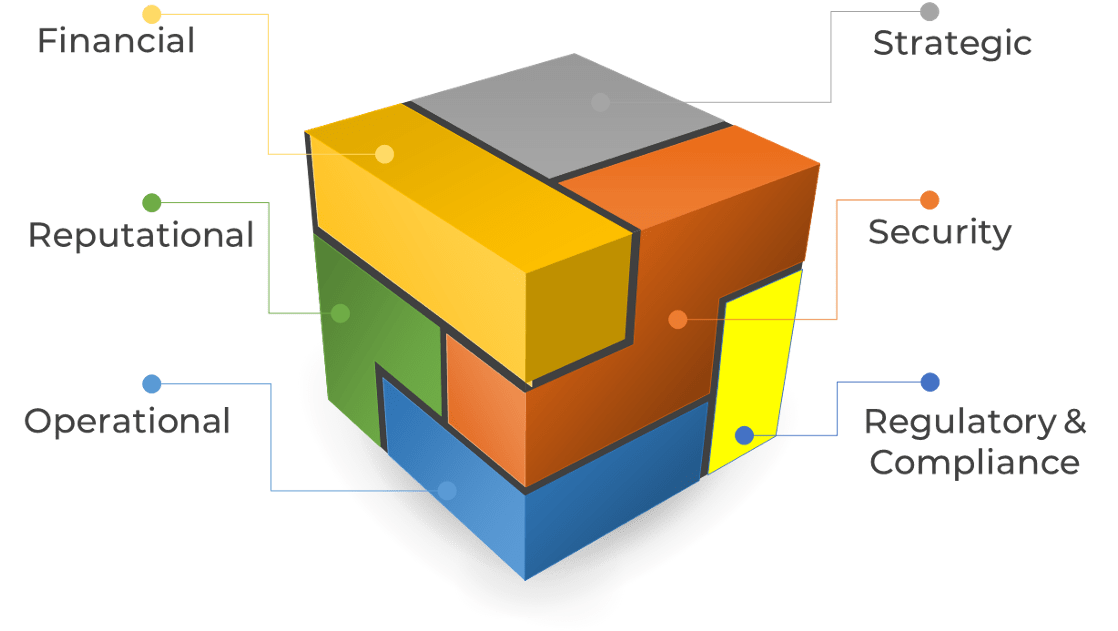- Moreso than at any other time, our world is changing. As a result, organizations – and their vendors – need to be able to adapt their plans to accommodate risk on an unprecedented level.
- It is increasingly likely that one of an organization's vendors, or their n-party support vendors, will cause an incident. Organizations must protect themselves by creating better mechanisms to hold their n-party vendors accountable and validate that they comply.
Our Advice
Critical Insight
- Identifying and managing a vendor’s potential risk impact on your organization requires multiple people in the organization across several functions. Those people all need coaching on the potential changes in the market and how these changes may affect your organization.
- Organizational leadership is often taken unaware by changes, and their plans lack the flexibility to adjust to significant regulatory upheavals.
Impact and Result
- Vendor management practices educate organizations on the different potential risks from vendors in your market and suggest creative and alternative ways to avoid and help manage them.
- Prioritize and classify your vendors with quantifiable, standardized rankings.
- Prioritize focus on your high-risk vendors.
- Standardize your processes for identifying and monitoring vendor risks with our Comprehensive Risk Impact Tool to manage potential impacts.
Looking at Risk in a New Light: The Six Pillars of Vendor Risk Management
Approach vendor risk impact assessments from all perspectives.
Analyst Perspective
Organizations must comprehensively understand the impacts vendors may cause through different potential actions.

The risks from the vendor market have become more prevalent as the technologies and organizational strategies shift to a global direction. With this shift in risk comes a necessary perspective change to align with the greater likelihood of an incident occurring from vendors' (or one of their downstream support vendor's) negative actions.
Organizational leadership must become more aware of the increasing risks that engaging vendors impose. To do so, they need to make informed decisions, which can only be provided by engaging expert resources in their organizations to compile a comprehensive look at potential risk impacts.
Frank Sewell
Research Director, Vendor Management
Info-Tech Research Group
Executive Summary
Your ChallengeMore so than at any other time, our world is changing. As a result organizations – and their vendors – need to be able to adapt their plans to accommodate risk on an unprecedented level. It is increasingly likely that one of your vendors, or their n-party support vendors, will cause an incident. Organizations must protect themselves by creating better mechanisms to hold their n-party vendors accountable and validate that they comply. |
Common ObstaclesIdentifying and managing a vendor’s potential risk impact on your organization requires multiple people in the organization across several functions. Those people all need coaching on the potential changes in the market and how these changes may affect your organization. Organizational leadership is often taken unaware by changes, and their plans lack the flexibility to adjust to significant regulatory upheavals. |
Info-Tech's ApproachVendor management practices educate organizations on the different potential risks from vendors in your market and suggest creative and alternative ways to avoid and help manage them. Prioritize and classify your vendors with quantifiable, standardized rankings. Prioritize focus on your high-risk vendors. Standardize your processes for identifying and monitoring vendor risks with our Comprehensive Risk Impact Tool to manage potential impacts. |
Info-Tech Insight
Organizations must evolve their risk assessments to be more adaptive to respond to changes in the global market. Ongoing monitoring and continual assessment of vendors’ risks is crucial to avoiding negative impacts.
Info-Tech’s multi-blueprint series on vendor risk assessment
There are many individual components of vendor risk beyond cybersecurity.`

This series will focus on the individual components of vendor risk and how vendor management practices can facilitate organizations’ understanding of those risks.
Out of Scope:
This series will not tackle risk governance, determining overall risk tolerance and appetite, or quantifying inherent risk.
The world is constantly changing
The IT market is constantly reacting to global influences. By anticipating changes, leaders can set expectations and work with their vendors to accommodate them.
When the unexpected happens, being able to adapt quickly to new priorities ensures continued long-term business success.
Below are some things no one expected to happen in the last few years:
62%
of IT professionals are more concerned about being a victim of ransomware than they were a year ago.
Info-Tech Tech Trends Survey 2022
82%
of Microsoft non-essential employees shifted to working from home in 2020, joining the 18% already remote.
Info-Tech Tech Trends Survey 2022
89%
of organizations invested in web conferencing technology to facilitate collaboration.
Info-Tech Tech Trends Survey 2022

 Looking at Risk in a New Light: The Six Pillars of Vendor Risk Management
Looking at Risk in a New Light: The Six Pillars of Vendor Risk Management
 Manage Exponential Value Relationships
Manage Exponential Value Relationships
 Jump Start Your Vendor Management Initiative
Jump Start Your Vendor Management Initiative
 Capture and Market the ROI of Your VMO
Capture and Market the ROI of Your VMO
 Cut Cost Through Effective IT Category Planning
Cut Cost Through Effective IT Category Planning
 Design and Build an Effective Contract Lifecycle Management Process
Design and Build an Effective Contract Lifecycle Management Process
 Maximize Value From Your Value-Added Reseller (VAR)
Maximize Value From Your Value-Added Reseller (VAR)
 Drive Successful Sourcing Outcomes With a Robust RFP Process
Drive Successful Sourcing Outcomes With a Robust RFP Process
 Reduce Risk With Rock-Solid Service-Level Agreements
Reduce Risk With Rock-Solid Service-Level Agreements
 Slash Spending by Optimizing Your Software Maintenance and Support
Slash Spending by Optimizing Your Software Maintenance and Support
 Identify and Manage Financial Risk Impacts on Your Organization
Identify and Manage Financial Risk Impacts on Your Organization
 Identify and Manage Strategic Risk Impacts on Your Organization
Identify and Manage Strategic Risk Impacts on Your Organization
 Identify and Manage Reputational Risk Impacts on Your Organization
Identify and Manage Reputational Risk Impacts on Your Organization
 Identify and Manage Security Risk Impacts on Your Organization
Identify and Manage Security Risk Impacts on Your Organization
 Evaluate Your Vendor Account Team to Optimize Vendor Relations
Evaluate Your Vendor Account Team to Optimize Vendor Relations
 Elevate Your Vendor Management Initiative
Elevate Your Vendor Management Initiative
 Prepare for Negotiations More Effectively
Prepare for Negotiations More Effectively
 Implement Your Negotiation Strategy More Effectively
Implement Your Negotiation Strategy More Effectively
 Evaluate and Learn From Your Negotiation Sessions More Effectively
Evaluate and Learn From Your Negotiation Sessions More Effectively
 Proactively Identify and Mitigate Vendor Risk
Proactively Identify and Mitigate Vendor Risk
 Master the Public Cloud IaaS Acquisition Models
Master the Public Cloud IaaS Acquisition Models
 Essentials of Vendor Management for Small Business
Essentials of Vendor Management for Small Business
 Identify and Manage Regulatory and Compliance Risk Impacts on Your Organization
Identify and Manage Regulatory and Compliance Risk Impacts on Your Organization
 Identify and Manage Operational Risk Impacts on Your Organization
Identify and Manage Operational Risk Impacts on Your Organization
 Don’t Allow Software Licensing to Derail Your M&A
Don’t Allow Software Licensing to Derail Your M&A
 Identify and Reduce Agile Contract Risk
Identify and Reduce Agile Contract Risk
 Improve Your Statements of Work to Hold Your Vendors Accountable
Improve Your Statements of Work to Hold Your Vendors Accountable
 Understand Common IT Contract Provisions to Negotiate More Effectively
Understand Common IT Contract Provisions to Negotiate More Effectively
 Master Contract Review and Negotiation for Software Agreements
Master Contract Review and Negotiation for Software Agreements
 Master the MSA for Your Managed Services Providers
Master the MSA for Your Managed Services Providers
 Negotiate SaaS Agreements That Are Built to Last
Negotiate SaaS Agreements That Are Built to Last
_preview7c3d.png?1721403516) Establish a Vendor Management Roadmap to Succeed With Autonomous Technologies
Establish a Vendor Management Roadmap to Succeed With Autonomous Technologies